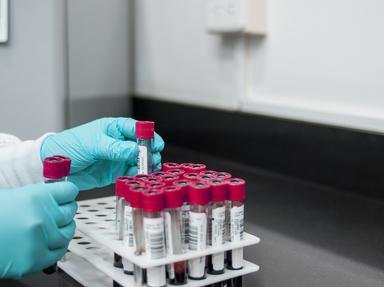Quiz Answer Key and Fun Facts
1. How many distinct groups must a carbon have to be chiral?
2. What are the terms that are symbolized by E and Z when notating alkene isomerism?
3. Monosubstituted alkenes show E/Z isomerism.
4. What type of stereochemistry do Sn1 reactions show?
5. What type of stereochemistry do Sn2 reactions show?
6. A molecule that has three stereocenters may have eight possible stereoisomers.
7. Consider a molecule that has two stereocenters. Both are attached to an identical set of four groups. One is R and one is S. What two words best describe the stereochemistry of this molecule?
8. So you have successfully identified a meso compound. Now tell me what is true about the different stereoisomers (if any) of a meso compound.
9. Which of the following statements is true about a pair of enantiomers?
10. What is the (official) name for the laws that govern assignment of R and S?
Source: Author
KMarieJ
This quiz was reviewed by FunTrivia editor
rossian before going online.
Any errors found in FunTrivia content are routinely corrected through our feedback system.

